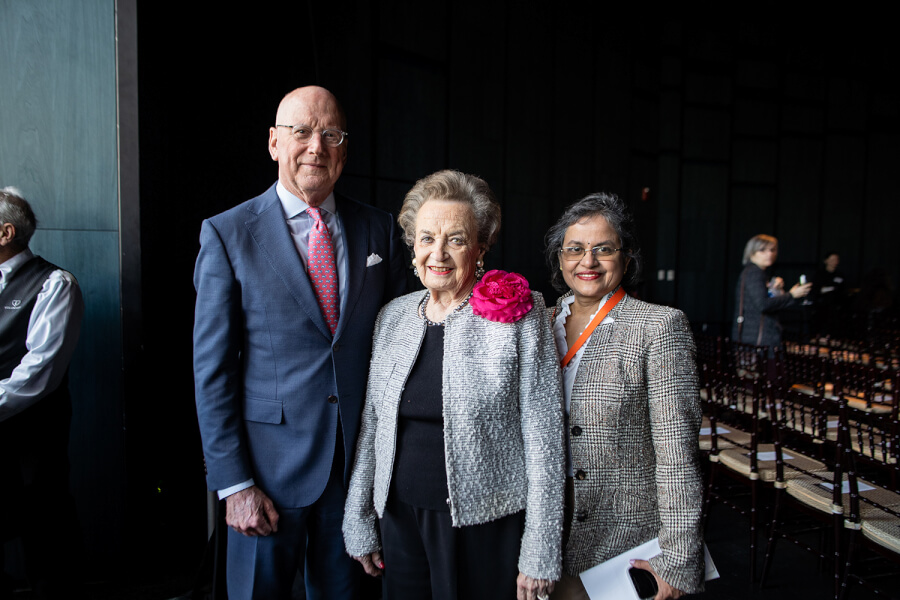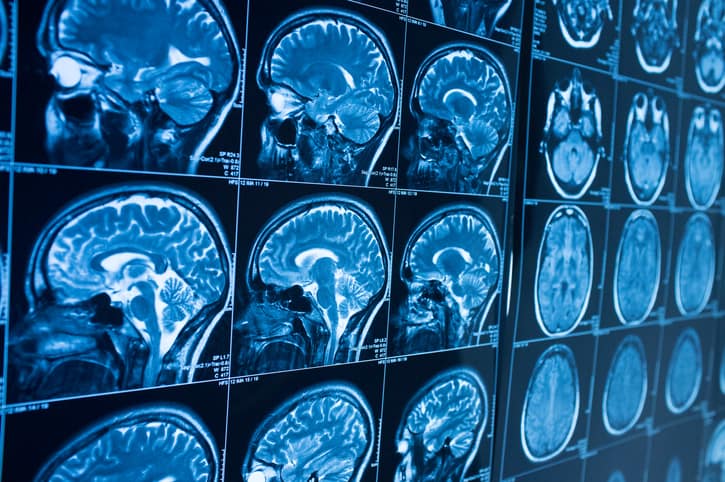“Glenn would be so pleased that this prestigious NIH Center of Excellence has been awarded to help the families of our region and the state that he loved.”
The University of Texas Health Science Center at San Antonio and The University of Texas Rio Grande Valley, working in close collaboration, were announced Sept. 9 as a new National Institute on Aging (NIA)-designated Alzheimer’s Disease Research Center (ADRC).
The South Texas partners are joining 32 other centers in the national network, which the NIA established in 1984 to promote research collaboration, encourage data sharing and open science, and offer information and clinical trials for patients and families affected by Alzheimer’s and related dementias. The NIA is part of the National Institutes of Health (NIH), and ADRCs are NIH Centers of Excellence. No other Texas institution or consortium is an ADRC currently.
“Texas is the third most populous state in the country, has the second highest number of deaths related to Alzheimer’s disease, and is home to a Mexican American Hispanic population that is among the fastest growing U.S. demographic segments,” said Sudha Seshadri, MD, professor of neurology at UT Health San Antonio and founding director of its Glenn Biggs Institute for Alzheimer’s and Neurodegenerative Diseases. “This federal designation by NIA will be transformational as we seek cures and provide the best possible care, based on the most up-to-date knowledge and technology, to the families of South Texas and throughout our state.”
Gladys Maestre, MD, PhD, UTRGV professor of neurosciences, is director of the Rio Grande Valley Alzheimer’s Disease Resource Center for Minority Aging Research (RGV AD-RCMAR), the first federally funded Center of Excellence at the university.
“What truly distinguishes UTRGV is our focus on the future and our willingness to take risks to shape the future,” Dr. Maestre said. “Alzheimer´s disease takes a higher toll among Hispanics, and through the partnership with the team in San Antonio and the network of other ADRCs, we will be positioned to make discoveries needed to change the trajectory of pain caused by the disease.”

UT Health Science Center San Antonio established the Glenn Biggs Institute with Dr. Seshadri’s arrival in December 2017. Starting a couple of years earlier, the institution had raised more than $40 million from the community for a comprehensive center to serve families impacted by Alzheimer’s and other neurodegenerative diseases. Community leaders Glenn and Ann Biggs were the inspiration. After his Alzheimer’s diagnosis, the couple struggled to find such care. Mr. Biggs died in May 2015.
“There is currently no means to prevent or cure Alzheimer’s disease,” UT Health Science Center President William L. Henrich, MD, MACP, said. “It is a condition that not only devastates the patient, but also family and friends as they helplessly witness the inevitable decline. Glenn would be so pleased that this prestigious NIH Center of Excellence has been awarded to help the families of our region and the state that he loved.”
“Both UTRGV and UT Health Science Center San Antonio put together this program with a great deal of philanthropic support from the local community that was affected by this disease, as well as with state and university support,” Dr. Seshadri said. “This NIH Center of Excellence designation is a national recognition of their efforts.”
Unique perspectives
UTRGV’s RGV AD-RCMAR was established in 2018 with funding from the National Institute on Aging. Its location on the South Texas border with Mexico and its predominant Hispanic population affords the center close and unique perspectives.
It leads initiatives across UTRGV colleges and administrative departments to work with patient advocacy groups, community-based organizations, private and public health care providers, state and federal agencies, and other academic institutions to enhance the diversity of the workforce in minority aging research.
Dr. Maestre said the growing group of diverse researchers are studying the disproportionate health and economic burdens of Alzheimer’s disease in Hispanics, and hope to accelerate cutting-edge research programs, interventions and health care services for the prevention, care and treatment of dementia tailored to Hispanics and health care providers in region.
UTRGV President Guy Bailey, PhD, said this collaboration between UT Health Science Center San Antonio and UTRGV is a key step in expanding research opportunities that will help enhance the quality of life for countless Hispanics in South Texas.
“As a region, we share a family of cultural, physical and societal ties that make the formation of this NIA-designated Alzheimer’s Disease Research Center so important,” Dr. Bailey said. “We are grateful to the National Institute on Aging, our colleagues at UT Health Science Center San Antonio, and all the researchers, faculty and staff who have worked so hard for more than a year to create this important center.”
The new designation’s impact
As an ADRC, the South Texas center immediately becomes “part of the national conversation,” Dr. Seshadri said.
“Our research discoveries and the insights we learn from our patients and families about what is important to them will become part of a very large national dataset for ADRC scientists and health policy experts to use, and we will be part of shaping the research as well as rapidly learning from the wisdom of all our colleagues at the other centers. It will be a game-changer that will take our research and care to the next level,” Dr. Seshadri said.

“The Biggs Institute is firmly committed to finding answers for Alzheimer’s and related dementias, as evidenced by the launch of our Brain Bank, which includes donated autopsy brains and spinal cord tissue,” said Robert Hromas, MD, professor and dean of the Joe R. and Teresa Lozano Long School of Medicine at UT Health Science Center San Antonio. “Our investigators are leveraging these resources to find new treatments for brain aging and degeneration.”
Community engagement is a prime emphasis of every ADRC.
Michael Hocker, MD, MHS, dean of the UTRGV School of Medicine, said he is excited about the opportunities this new collaborative research center will bring, not just for faculty and staff, but also for medical students looking to pursue an area of specialty research into the impact of Alzheimer’s disease on the area’s predominantly Hispanic population.
“UTRGV is committed to transforming the health of the region, and this is another step we will take to improve the aging population who suffer from Alzheimer’s in South Texas. We will conduct much of this clinical care and research at our soon-to-open Institute of Neuroscience in Harlingen, where we will evaluate and treat patients with neurologic conditions including dementia, Alzheimer’s and other neuropsychiatric diagnoses. We also will conduct clinical trials and other research to improve neurologic and behavioral conditions,” Dr. Hocker said. “This research could have significant impact for the Hispanic community, South Texas and, we believe, well beyond.”
Dr. Maestre said advanced research in dementia and minority aging is key to reducing health disparities among Hispanics in South Texas, and the collaboration with UT Health Science Center San Antonio is a major step forward.
“By working together, we are building infrastructure and a system for data collection that will attract and support diverse expert multidisciplinary researchers,” she said, “so we can expand this important research aimed at reducing the impacts of Alzheimer’s disease on families in South Texas and beyond.”
An under-studied population
Combining the strengths of two Alzheimer’s disease institutes into one ADRC offers many advantages. For one, research and care outreach to families will extend from San Antonio and surrounding areas to McAllen, Harlingen, Brownsville and all parts of the Lower Rio Grande Valley of Texas, and to each county in between. The entire region is majority Hispanic in population.
“Hispanics are an under-studied population in dementia research,” said Dr. Seshadri, a physician-researcher who has authored many genetic studies of large populations. “Although our center will study all people, we are in an ideal location to place a strong focus on Hispanic families. Newly studied populations enable us to find new genes and new treatment targets that are of relevance to people throughout the world. We will also continue to train the next generation of researchers from diverse backgrounds, and to translate our findings in culturally relevant ways to the community, including, most importantly, affected individuals and their caregivers. We thank the wonderful people of San Antonio and South Texas whose vision, generosity and support have brought us to this point; we will continue to partner with them to learn more and better ways to prevent, treat and support our community, our patients and their families.”
NIA-designated ADRCs serve as major sources of discovery into the nature of Alzheimer’s disease and related dementias and into the development of more effective approaches to prevention, diagnosis, care and therapy. The South Texas center was funded by NIH grant P30AG066546.


